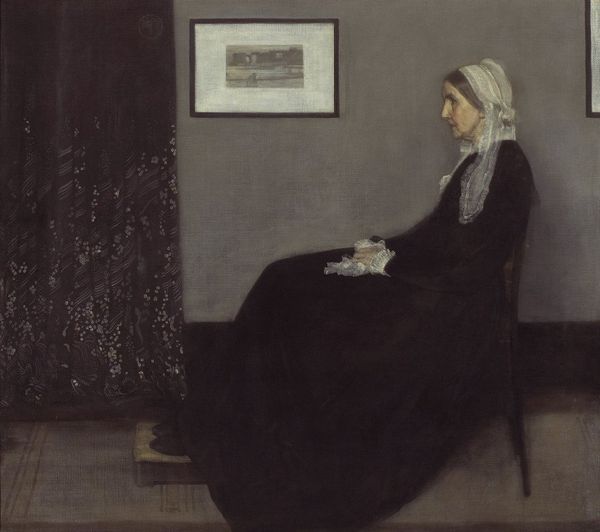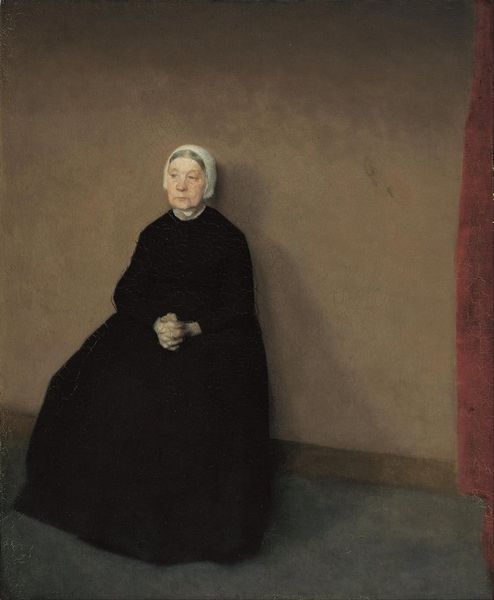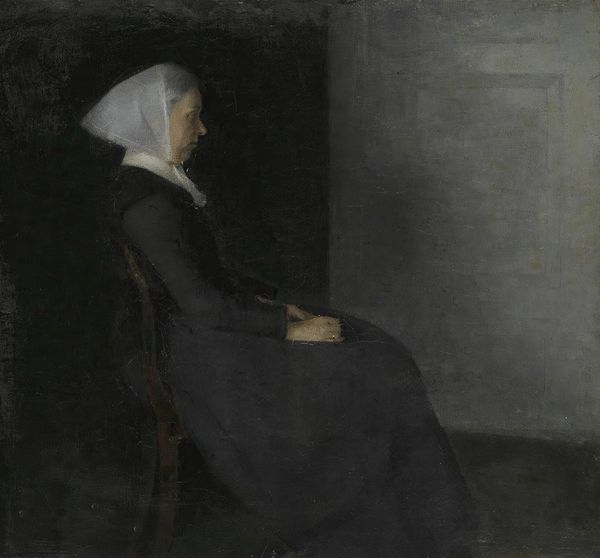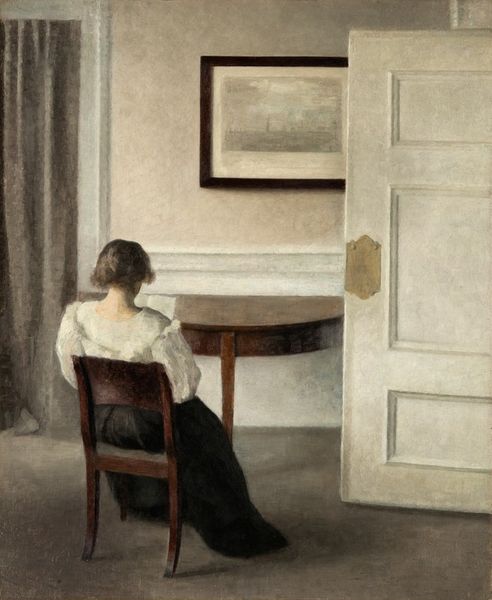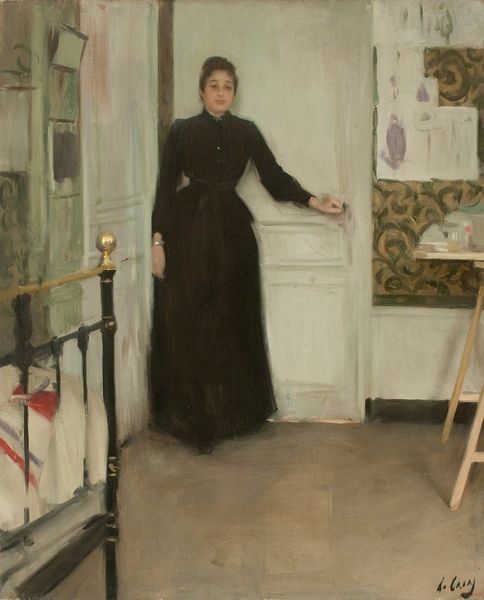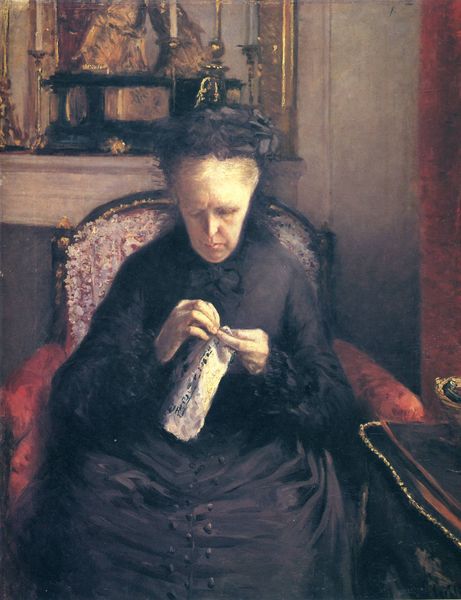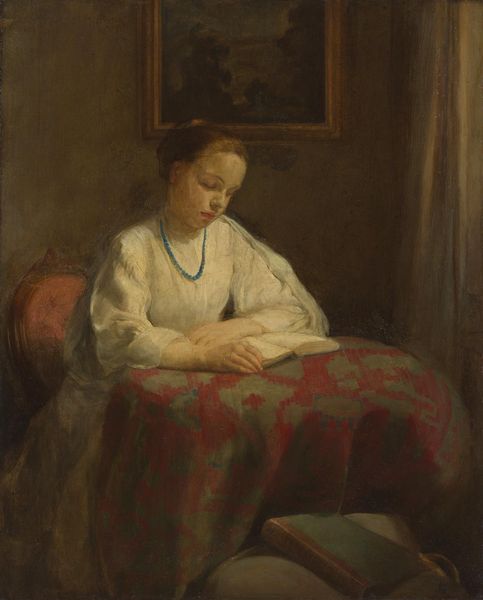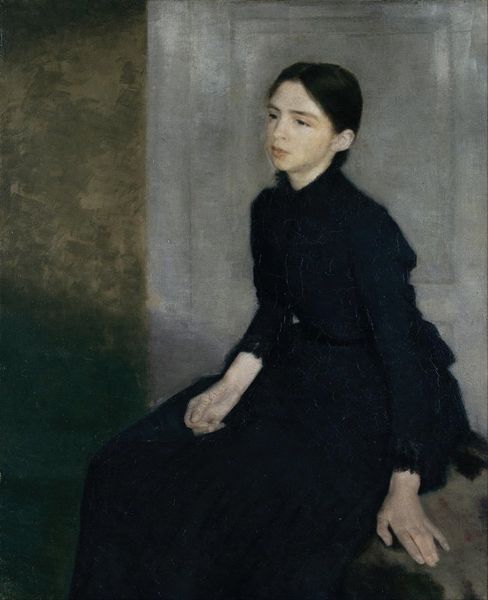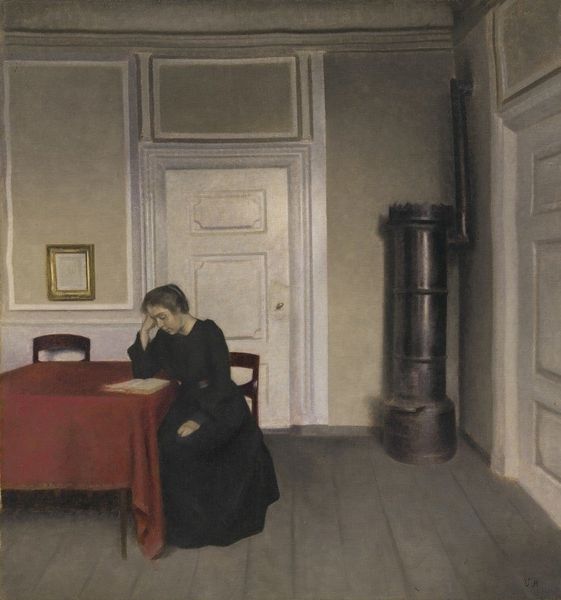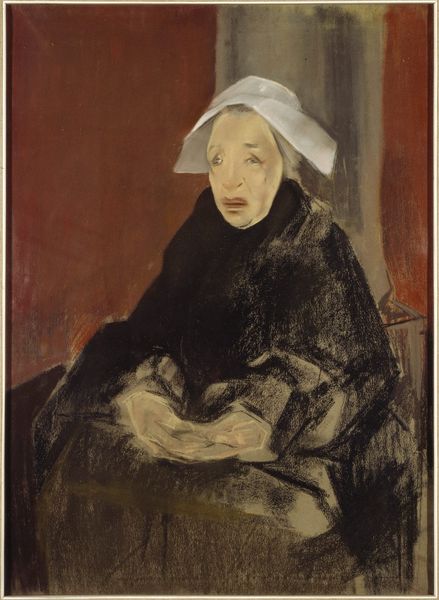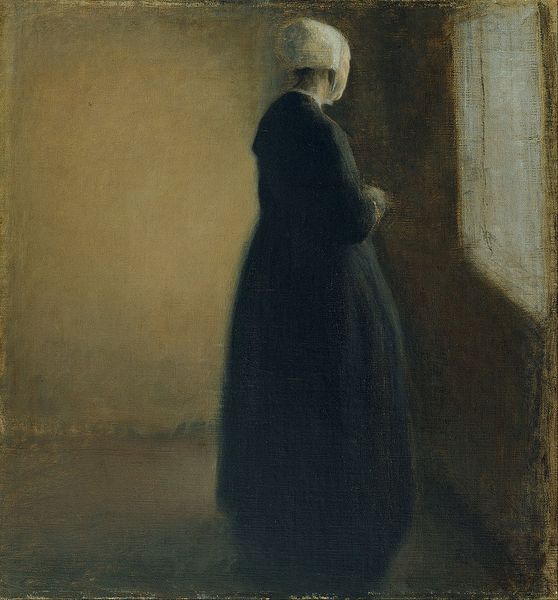
Arrangement in Grey and Black No.1, Portrait of the Artist's Mother 1871
0:00
0:00
painting
#
portrait
#
painting
#
impressionism
#
genre-painting
Dimensions: 162.5 x 144.3 cm
Copyright: Public domain
In ‘Arrangement in Grey and Black No.1’ (1871), more commonly known as ‘Whistler’s Mother’, the American-British artist James McNeill Whistler (1834-1903) depicts his mother, Anna. This huge oil painting was the first American artwork purchased by the French state, and is now proudly displayed in the Musée d’Orsay, Paris. But why was this work so divisive when it was painted? 👇 Rather than the straight, head-on structure of traditional portraits, ‘Arrangement in Grey and Black No.1’ makes use of the side profile. Anna Whistler does not face the viewer, but rather gazes out of the side of the canvas. She refuses to interact with us, and appears lost in her own thoughts. We almost feel as though we are intruding on her solitude. She is represented as quiet, patient, and completely still. The composition is unconventionally simple and stark. Whistler has restricted his colour palette to subtle tones of grey and black which reinforce the psychological depth of the piece. His soft brushstrokes have been described as ‘fuzzy’ and ‘furry’. Here, Whistler has painted his mother in a long, loose-fitting gown of stark black. The heavy fabric conceals her entire body, juxtaposing with the delicate white lace of her bonnet. She is seated on a simple wooden chair – Whistler had originally planned for his mother to stand for her portrait, but she was unable to model standing up for an extended period of time. 🪑 Anna McNeill Whistler sat for this portrait at her shared home in Cheyne Walk, London. The historic street was then home to a wealth of artists, including painters J.M.W Turner and Dante Gabriel Rossetti. Such figures as Bram Stoker, Laurence Olivier, T.S. Eliot, and Mick Jagger have also lived on the street! 🏘️ This painting has become an enduring image in popular culture, just like Leonardo da Vinci’s ‘Mona Lisa’. It is often interpreted as a tribute to motherhood and family. Whistler, however, rejected any moral readings of his work – instead, he insisted that he painted ‘art for art’s sake’, with no deeper meanings. 🙅 Editor: Lucy Jude Grantham
Comments
Join the conversation
Join millions of artists and users on Artera today and experience the ultimate creative platform.
artera over 1 year ago
⋮
The singular vision that James McNeill Whistler (1834-1903) brought to bear on his Nocturnes, the series of paintings that largely consisted of views of the River Thames, he also applied to the genre of portraiture. Moreover, what connected the two series was an indubitable conviction that it was the task of the artist to reveal what resided underneath the surface appearance of observed, empirical reality. First exhibited at the Royal Academy in 1872, Arrangement in Grey and Black: The Artist's Mother was acquired by the French state in 1891. Whistler presents a pared-down, analytical study organized around a series of oisrete and overlapping axes, bron vertical and horizontal, Indeed, it is only the contour of Anna Whistlers body that provides any form of visual contrast with and visual respite from the painting's overarching angularity. Although the formal qualities of the painting provide some form of visual counterpoint, the actual appearance of Anna Whistler, seen in profile, remains consonant with the painting's overarching pictorial style—both are foregrounded by an austerity and economy of means, and both, in effect, are lacking any extraneous, unnecessary detail or embellishment. Arrangement is unprecedented and remarkable when one considers that the painting also functions as a portrait. If the artist's Nocturne series anticipated the experiments carried out under the rubric of lyrical abstraction, then Arrangement predates a related movement, Geo-abstraction, by at least half a century.
